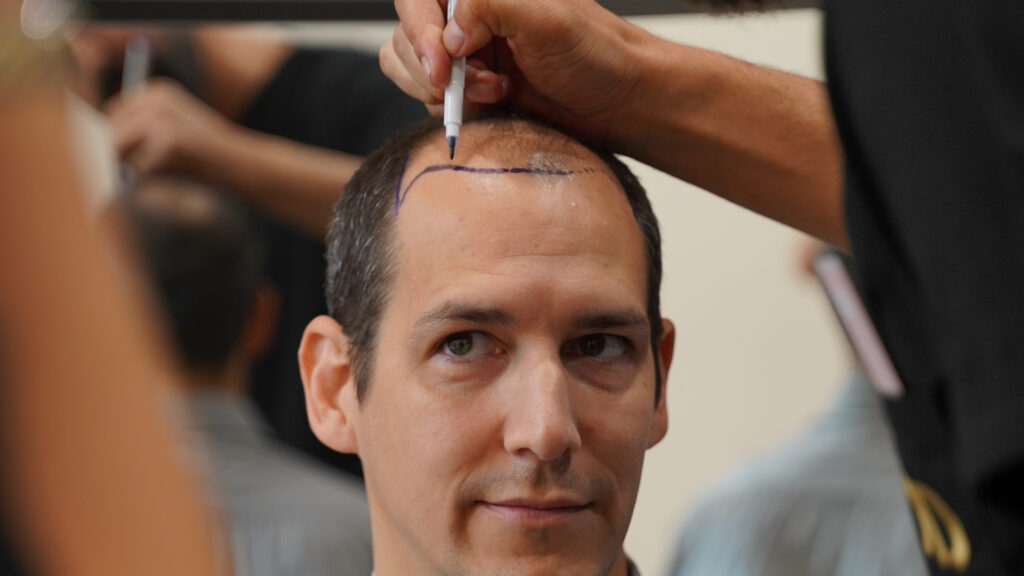The field of dental implantology is ever-evolving, offering tailored solutions for anyone seeking to aesthetically and functionally restore their teeth. One frequently asked question is: how many dental implants can be placed at one time? The answer is not straightforward, and there is no set maximum number of implants for a single session. Various factors dictate this, including the chosen implantation method and the patient’s bone mass. This article will guide you through understanding the key factors influencing the number of dental implants you can have simultaneously.

Different Types of Implantation Methods: Immediate, Early, and Conventional
The method of implantation is vital for the success of the procedure. Depending on factors such as the patient’s oral health and bone mass, there are three main methods to choose from: immediate, early, or conventional implantation. Each has unique features and can be suitable for different situations.
The Immediate Method: Multiple Implants in a Single Session
For those who have lost one or more teeth, the allure of promptly regaining a full smile is compelling. The immediate implant method addresses this need by allowing for the immediate replacement of missing teeth.
The primary benefit of the immediate method is that multiple implants can be inserted on the same day as the damaged teeth are extracted. This translates into fewer surgeries, reduced waiting time, and almost immediate mouth rehabilitation.

Advantages of Immediate Implantation include:
- Quick Recovery: The gap between extraction and implant placement is eliminated, thus accelerating the healing and restoration process.
- Fewer Appointments: The combination of multiple steps in one session reduces the total number of visits, which is convenient for the patient and could result in cost savings.
However, the immediate implantation method is not suitable for everyone. A comprehensive assessment of the patient’s oral condition is required before proceeding. This ensures that the extraction site is appropriate and evaluates whether the patient’s bone mass is sufficient to anchor the implant securely.
Patients with existing infections or inadequate bone structure may need additional treatments or procedures beforehand.

The Early Method: A Balanced Approach with a Few Weeks’ Wait
The early implantation method is a middle-ground option between immediate and conventional implantation.
In this approach, the dental implants are not inserted on the day of tooth extraction. Instead, patients are required to wait a few weeks. This waiting period allows for partial healing of the extraction site, facilitating better implant osseointegration.
Advantages of the Early Method:
- Partial Healing Period: This method gives the extraction site time to heal, minimising the risk of infection or other complications.
- Adaptable to Complex Cases: For patients facing more intricate oral issues or inadequate bone density, the early method provides the necessary time to prepare the jawbone for the implant.
The trade-off here is that the restoration process takes longer than immediate implantation. There might be better options for those looking for a quicker solution.

The Conventional Method: Extended Waiting Period for Optimal Healing
The conventional method is widely utilised and is recommended for cases requiring thorough healing for successful implantation. Unlike the early and immediate methods, this approach demands an extended waiting period between the extraction and implant placement.
Patients must wait several months after the tooth extraction to ensure that the extraction site has fully healed and the jawbone is optimally prepared for the implant.
Advantages of the Conventional Method:
- Ideal for Complex Cases: This approach is often the go-to option for patients dealing with more complicated oral conditions like previous infections, low bone density, or other potential complications.
- Complete Healing: The extended waiting period allows for thorough healing of the extraction site, maximising the likelihood of successful implant osseointegration.

The key downside of the conventional method is the prolonged waiting time, which may be cumbersome for those keen on quick oral restoration.
In cases where bone volume is lacking, the number of implants that can be placed in a single surgery may be restricted. Under such circumstances, additional treatments like bone grafting might be necessary before implantation.
Criteria for Choosing the Right Implantation Method
Determining the appropriate method for dental implantation is more than just a one-size-fits-all decision. A variety of patient-specific factors influence it.
Assessing the Patient’s Oral Health
A comprehensive initial examination is crucial for evaluating the health of the maxillary and mandibular bones. This helps determine if implant placement can proceed without additional treatments, such as bone grafts.

Furthermore, the bone must have sufficient thickness to ensure stable implant anchoring. Further procedures may be required if the bone doesn’t meet the thickness criteria.
Lifestyle factors like diabetes or smoking can also increase the risk of implant failure. These must be accounted for during the planning phase.
Scope and Complexity of the Procedure
The number of implants needed can affect the choice of implantation method. In some scenarios, rather than inserting individual implants, using multiple implants to support a bridge or prosthesis might be a more robust solution.

The complexity of the dental issue, like the presence of infections, malocclusions, or significant bone loss, can also influence the choice of implantation method.
Given each patient’s unique situation, the implantation method should be determined after in-depth consultation with a dental professional and a full assessment of the individual’s oral health. This ensures not only the safety of the patient but also the long-term success of the implant.

Customised Consultation: Determine the Number of Implants Suited for You
At Body Expert, specialists in medical tourism, we recognise that each patient has individual needs—especially when considering medical procedures in a foreign country like Turkey. A tailored assessment is essential to outline your most appropriate treatment plan.

Based on the initial assessment and recommendations from the dental surgeon, you may have the opportunity to have multiple dental implants inserted in a single session. This could make your medical trip abroad more efficient.
To explore the best options tailored to your needs, contact Body Expert today for a personalised consultation with our team of experts.

Sources :
2266 vues
0 commentaires
0






Il n'y a pas de commentaires pour le moment.